
The hardest part of changing your lifestyle is getting started. Often, we spend our time prepping for a lifestyle change – Why is that? We don’t realize that we set our set up to fail by making our goals unrealistic. Goals don’t have to be anything more than simply starting the journey. Slow and steady wins the race and is the best way to achieve success when it comes to a healthy lifestyle change.
healthy eating
Raw Food is Clean Eating
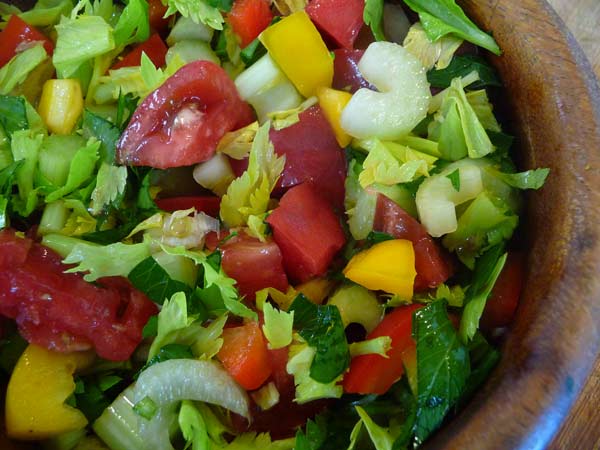
You may heard of the new raw food diet trend that celebrities like Katy Perry and Gwyneth Paltrow are on and are curious on what it means or how it is good for the body. The raw food diet, or clean eating is a fairly simple concept; instead of obsessing over ingesting less or more of particular things (like fewer calories or more protein) you are more aware of the origin of the food that goes on your plate. Cleaning eating is about consuming whole foods, or “real” foods which are “un” or minimally processed, refined, and handled making them as close to natural as you possible. The production of modern food has become so complicated that simply eating whole foods can be a challenge.
Let’s start by defining processed foods:
> Additives of any kind – like salt, sugar, fat to aid flavor and mouthfeel, preservatives that keep food from spoiling too quickly, and vitamins enriching everything from beverages to breakfast cereal.
> Changing the form of the natural food – removing the bran and germ from whole grains to create refined bread, mashing apples into applesauce, or stir-frying veggies.
> Foods with parts manufactured in a lab.
You probably just realized that processed foods are everywhere from the oatmeal you consume in the morning to the hotdog you grab on your lunch break from that food vendor. And yes, changing the form of natural food includes cooking as well, so even your steamed broccoli is technically processed.
That being the case, why is processing food bad?
It’s not. Or rather, not categorically. Most time processing removes toxins or bacteria; allowing off-season foods to be consume due to freezing or canning. It also includes altering the consistency or taste of food. Yes, that post-workout spiced banana-almond smoothie is processed, even when you add kale and spinach to it. Though pasteurized milk, kale smoothies, and instant oatmeal are process they are not on the same level as honey buns and soda.
Process food is apart of modern diet, but the key is to stay away ‘ultra-processed’; anything food-like product or ready-to-heat.
The problem with ultra-processed foods are they are typical genetically modified organisms (GMOs)
GMOs are linked to cancer and infertility because ultra-processed foods are stripped of nutrients needed for overall health. Heavily modified foods are linked to a list of health problems because they tend to have additive that overstimulate the dopamine (pleasure neurotransmitter) produced in your brain causing a vicious cycle of craving junk food. The danger is that ultra-processed foods are marketed in a way that makes it seem good for you (less sodium! no trans fats! vitamin-enriched!) but are more damaging to your health.
Eat Clean
> Unprocessed foods:
- Fresh fruits and vegetables
- Dried legumes
- Nuts
- Farm-fresh eggs
> Minimally processed foods:
- Unrefined grains: whole wheat bread, pasta, popcorn, steel-cut oatmeal, quinoa, and brown rice
- Frozen fruits and vegetables
- Unprocessed meat; wild over pastured, pastured over grain-fed
- Hormone-free dairy
- Oils
Why Eat Clean
Plant-based diets are healthy and can curb or prevent certain life-threatening conditions and diseases like type 2 diabetes, cardiovascular disease, and high blood pressure. Diets high in fruits and vegetables are linked to healthy weight management and glowing skin and hair.
Shop Clean
Stick to the perimeter of your grocery store, processed food lurks in the aisles in between. When you are approaching those aisle ask yourself critical questions like: Where did this food or its ingredients come from? How much has it been processed or handled?
The ingredient label should be short, and all ingredients should be recognizable. Scan for easy-to-avoid additives like artificial coloring and flavors. Eating clean (raw) doesn’t mean you need to eat everything straight from the ground; just choose minimally processed foods.
Oh La La: Why Are French Woman So Thin?!
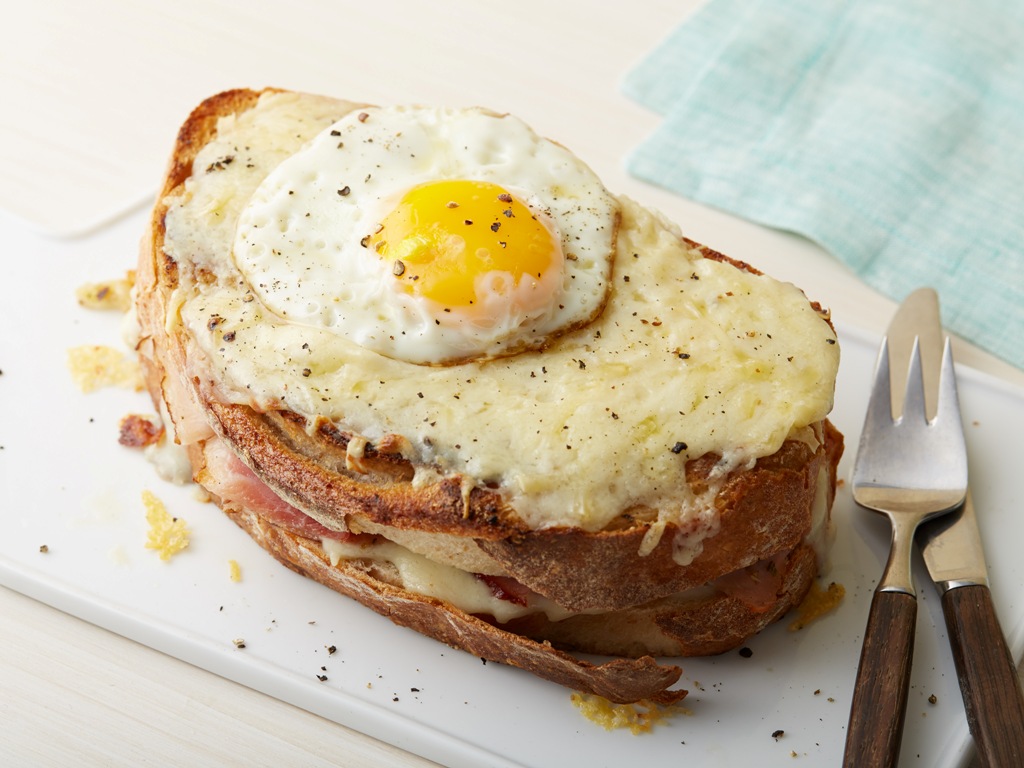
There is a mystical world across the big pond, where they indulge in carbs but their waistlines remain thin. They chow down on croissants with hazelnut spread, slurp huge cups of cappuccino, and every other meal is coupled with merlot yet French women physique never reflect it. How can they possibly stay so thin? Must be a French thing, right? Western girls, try to convince themselves that there is something in the water, but the hard truth is that there is no biological difference.
The secret to their flat stomach is quite simple stress and sleep management, diet, and exercise.
Stop Obsessing Over Fitness: For the French, fitness isn’t a hobby its a way of living. They do small simple thing that really add up – things you can do to engage your body while you’re doing other things. Instead of sitting on the toilet try squatting, when conversing on the phone go for a walk, contract your abs every time you walk through a doorway, and use the stairs instead of the elevator. Small exercises like these help fight the sedentary lifestyle and can burn up to 400 more calories daily.
Portions Means Everything: Portions sizes in the west are almost twice the size of those in France. Using simple tips like protein the size of a deck of cards, a serving of cheese half that size, and vegetables being the main attraction will aid you in your French unique weight loss journey. There is no such thing as off limit when it come to food for French beauties; they stick to small portions of decadent dishes.
Say No Supplements: The French don’t believe the solution to a healthy weight in a pressed pill. All those beautiful outdoor markets you see in photos of France aren’t just for show. They’re the health food stores of the nation. Instead, they get their vitamins and minerals from whole foods.
Stay Off The Clock: Stop trying to working during personal time, this leads to stress. Stress leads to an increase in cortisol levels. And high levels of cortisol levels cause your body to store fat around the abdomen. By leaving work-related woes at the time clock your body will hang on to less fat.
Sleep Without Distractions: American dreaming consist of laying down next to electronic devices, that is so NOT the French way. Americans keep their phones next to the bed side which disrupts sleep patterns making it harder to stay active the next day. As for French women, they are completely okay with shutting off their phone and charging it in the next room before they caught their Zs. They stay refresh and active this way.
These tricks are how French women stay so thin; they have healthy habits that are apart of their lifestyle which takes away the stress (fat). When in America do as the French do…say ‘oui’ to your unique weight loss solution.
Springtime Salad Recipes
Spring is here! While you are spring cleaning the house, why not spring clean your body? If you are looking for unique weight loss solutions, here are a few springtime salads that will please not only your body, but your palate!
Springtime Spinach Salad
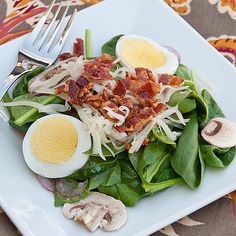 |
Ingredients
|
Directions
- Place the eggs in a saucepan with enough cold water to cover. Bring to a boil and immediately remove from heat. Cover, and let eggs stand in hot water for 12 to 15 minutes. Remove from hot water and cool. Peel, chop, and set aside.
- Cook the bacon in a skillet over medium high heat until crisp and evenly brown. Drain, crumble and set aside.
- In a large bowl, toss together the eggs, bacon, spinach, mushrooms, strawberries, onion, kiwi, and orange.
- In a separate bowl, mix the ketchup, water, olive oil, brown sugar, cider vinegar, and brown mustard. Season with garlic powder, salt, and pepper. Pour over the salad mixture, and top the salad with croutons.
Watermelon, Heirloom Tomato, and Feta Salad
Ingredients
|
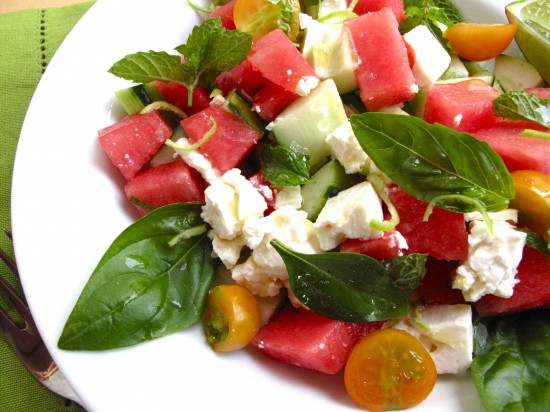 |
Directions
- Whisk together first 4 ingredients in a large bowl.
- Add tomato, watermelon, and onion; toss to coat.
- Sprinkle with cheese; toss gently.
Grilled Salmon-and-Asparagus Salad
Ingredients
|
Directions
- Brush salmon and toss asparagus with olive oil; sprinkle with salt and pepper. Grill salmon over medium-high heat (350° to 400°)
for 3 to 5 minutes on each side or until desired degree of doneness. - Grill asparagus, turning occasionally, 3 to 5 minutes or until tender.
- Divide arugula evenly among 4 plates; top with flaked salmon, asparagus, and tomatoes. Serve with vinaigrette
Grilled Salmon-and-Asparagus Salad
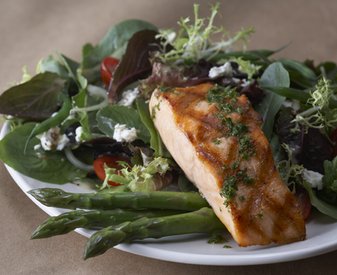 |
Ingredients
|
Directions
- Brush salmon and toss asparagus with olive oil; sprinkle with salt and pepper. Grill salmon over medium-high heat (350° to 400°)
for 3 to 5 minutes on each side or until desired degree of doneness. - Grill asparagus, turning occasionally, 3 to 5 minutes or until tender.
- Divide arugula evenly among 4 plates; top with flaked salmon, asparagus, and tomatoes. Serve with vinaigrette
Mint-Lime Spring Green Fruit Salad
Ingredients
|
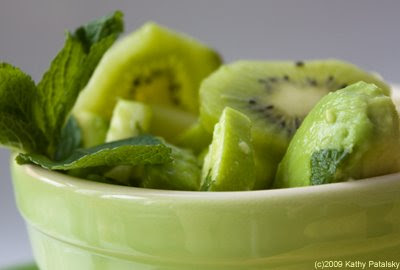 |
Directions
- Chop, squeeze and peel all ingredients.
- Add to a large bowl.
- Toss well with spoon.
Prevent Childhood Obesity
One out of every five children in the United States is overweight or obese and this number only continues to rise. Naturally, children are prone to have far few health and medical problems than adults, however, overweight children are at a higher risk of being overweight adolescents and adults. They risk developing chronic disease like heart diseases and diabetes. They are also more likely to struggle with stress, sadness, and poor self-esteem.
Causes of Childhood Obesity:
Commonly a lack of physical activity, unhealthy eating patterns, or a combination of the two. It is rare that childhood obesity is caused by a medical conditional and it can be ruled out with a simple physical exam can rule it out. Though weight problems can be genetic, not all children with a family history of obesity will be obese, their risk just increase. It normally has to do with shared family diet and lifestyle.
Inactive lifestyle is the major role in determining a child’s weight. Today, the average child spends four hours in front of a television, and now that computers and video games are becoming the forefront of entertainment, the hours of inactivity have increased.
Risk of Childhood Obesity:
High cholesterol
High blood pressure
Early heart disease
Diabetes
Bone problems
Skin conditions such as heat rash, fungal infections, and acne
Detection of Childhood Obesity:
The family doctor will notify if your child is overweight. Your child height, weight, and BMI (body mass index) will be compared to standard values and if they suffer from childhood obesity your doctor will consider also your child’s age and growth pattern when coming up a unique weight loss solution for them.
Aid of Childhood Obesity:
If you discover your child suffers from childhood obesity, you must be supportive. How children feel about themselves is directly related to how their parents feel them. Having a open line of communication where your child can here the importance of weight, but also where they can discuss their concerns is key.
Isolation of your child can be detrimental to your child confidence, so focus on changing family activities that engage them physically. A change of diet and lifestyle habits will teach the whole family a healthier lifestyle the overweight child won’t feel singled out or alone.
Engaging Family in Healthful Habits:
Increasing the family’s engagement of physical activity is important. Here are some ways to accomplish this:
- Lead by example. If your children see that you are physically active and having fun, they are more likely to be active and stay active for the rest of their lives.
- Plan family activities that provide everyone with exercise, like walking, biking, or swimming.
- Be sensitive to your child’s needs. Overweight children may feel uncomfortable about participating in certain activities. It is important to help your child find physical activities that they enjoy and that aren’t embarrassing or too difficult.
- Make an effort to reduce the amount of time you and your family spend in sedentary activities.

